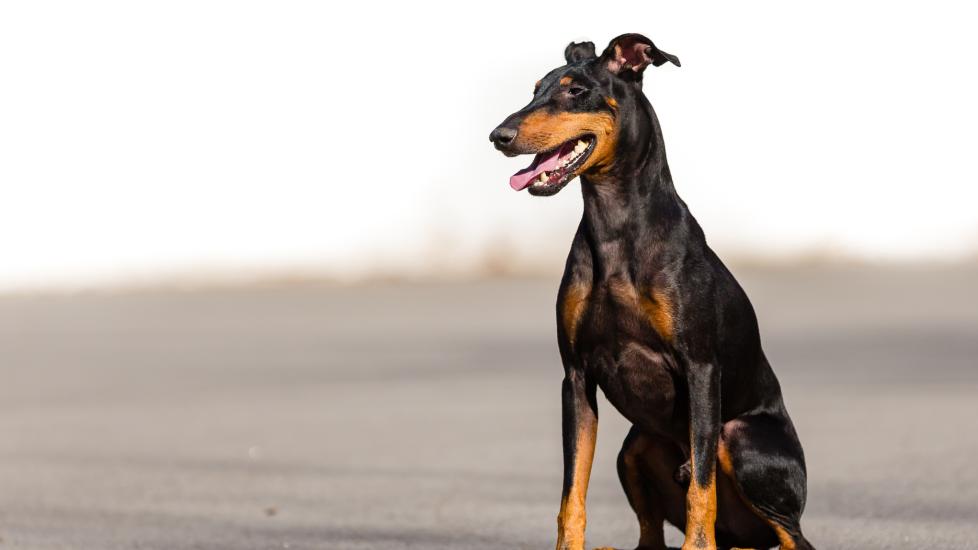Breed Overview:
- Lifespan: 12 – 15 years
- Coat Length: Short
- Alias(es): None
- Height: Up to 16 inches (male); up to 15 inches (female)
- Place of Origin: England
- Body Size: Small to medium
- Shedding Level: Low to moderate
- Trainability: Intelligent and willing to please; relatively easy to train
Introduction:
The Manchester Terrier is a compact, elegant breed with its roots in the industrial city of Manchester, England. Originally bred for ratting—the sport of killing rats—it has since evolved into a beloved family companion known for its agility and keen intelligence. The breed comes in two varieties: standard and toy, which differ mainly in size.
History:
Originating from crosses between Whippets and other terriers, the Manchester Terrier was developed by crossing the Black and Tan Terrier with the Old English Terrier sometime during the mid-1800s. Initially used as ratters on farms and in factories, they soon gained popularity among sportsmen due to their speed and agility. Today, they are recognized by major kennel clubs worldwide.
Physical Characteristics:
Both varieties have sleek bodies that reflect their heritage as sighthounds, with long legs relative to their overall size. They possess a distinctive black and tan coat coloration reminiscent of some hound breeds. Their ears are large and drop forward close to the cheeks, adding character to an already expressive face.
Temperament:
These dogs are energetic and playful, making them excellent companions for active families who enjoy outdoor activities such as jogging or hiking. They thrive on mental stimulation through training exercises and games requiring problem-solving skills. Socialization from puppyhood will ensure they get along well with children and other pets.
Exercise Needs:
With their athletic build, Manchester Terriers require regular physical activity to stay healthy both mentally and physically. Daily walks should be supplemented with playtime in a fenced yard if possible. Without adequate exercise, these dogs may become restless or even destructive indoors.
Training Requirements:
Manchester Terriers respond well to positive reinforcement methods like clicker training because they love praise and attention from their humans. Consistent training sessions should focus not only on obedience but also on manners around strangers and other animals. Early socialization can help prevent shyness or aggression later in life.
Grooming:
Their short coats make grooming relatively simple compared to longer-haired breeds; weekly brushing helps remove dead hair while promoting new growth. Bathe only when necessary as overbathing can strip natural oils from the skin causing dryness or irritation. Nails should be trimmed regularly using nail clippers designed specifically for dogs.
Health Considerations:
Like many purebred dogs, Manchester Terriers are prone to certain health issues including patellar luxation (slipped kneecaps), Legg-Calvé-Perthes disease affecting the hip joint, dental problems common to small breeds, allergies, and eye conditions such as progressive retinal atrophy (PRA). Regular veterinary checkups can assist in early detection of any developing concerns.
Living Conditions:
This breed does best in homes where there is ample space for running around outside yet still enjoys living inside with their human pack members. An apartment might suit a Manchester Terrier provided it receives plenty of daily exercise opportunities beyond just walking up and down stairs all day!
Conclusion:
For those seeking a loyal partner capable of keeping pace alongside them whether out exploring nature trails or relaxing indoors together watching movies – consider welcoming one of these delightful little hunters into your heart (and home) today!
